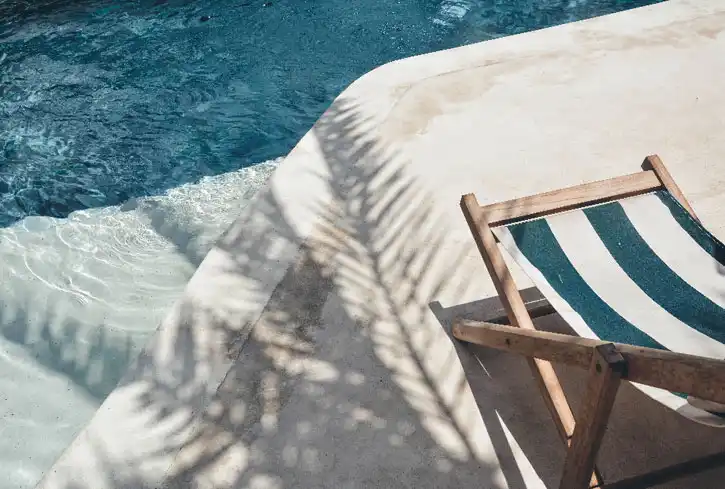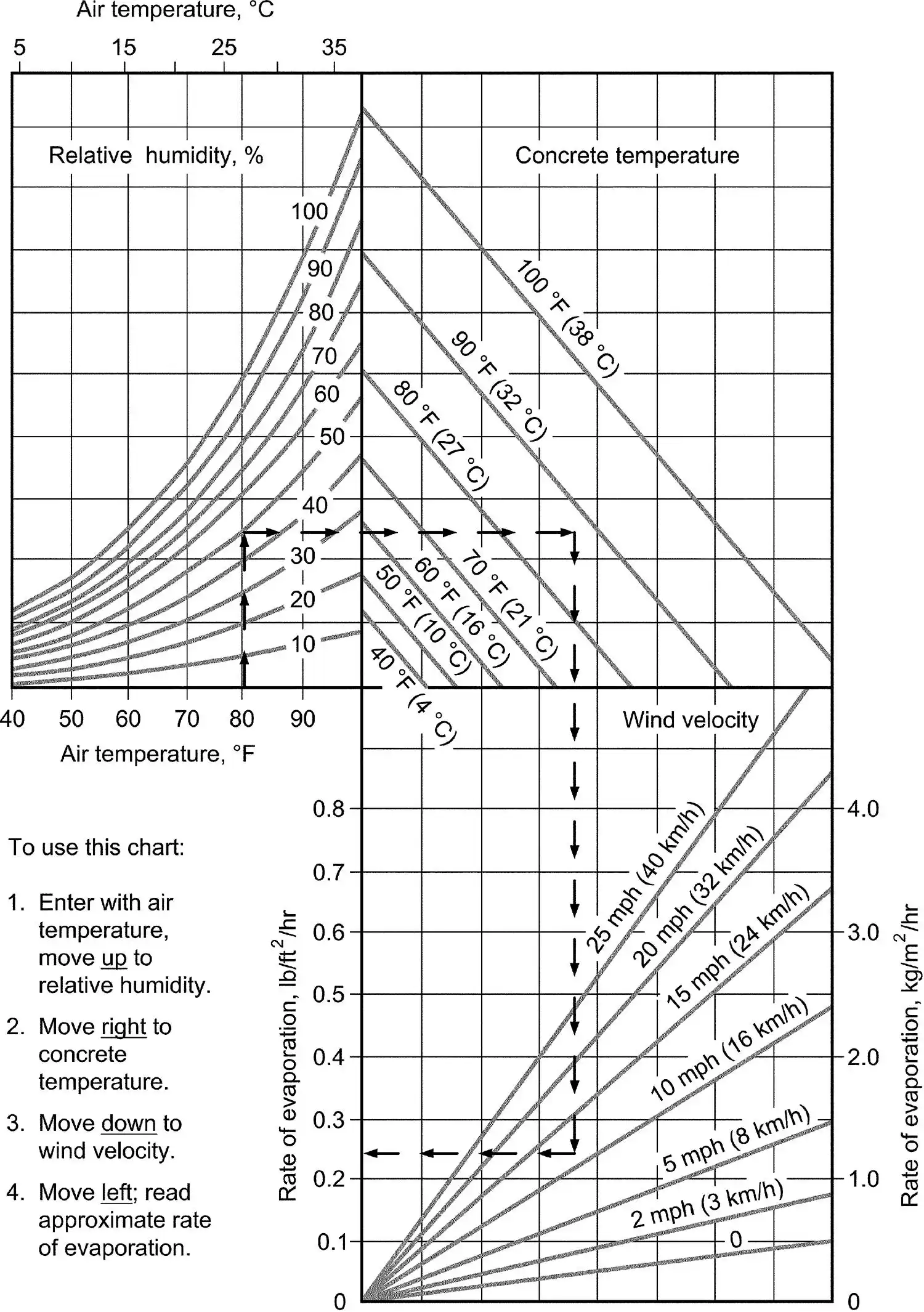Pool Professionals

Hot Weather Considerations
Currently, there is no Standard or Specification limiting the ambient air temperature for plastering. In fact, most cement and concrete trades have no such limitation. The reason for this is because hot weather plastering is much more complex than any one factor. Hot weather plastering should include the consideration, planning, and procedures necessary to limit or avoid potential issues relating to:
- Temperature of the ambient air
- Temperature and absorption rate of the substrate
- Temperature of the plastering materials
- Humidity of the ambient air
- Wind speed
Hot weather, low humidity, high winds, or a combination of these, can be detrimental if appropriate measures are not in place to offset the prevailing conditions when necessary. Potential hot weather issues may include:
- Decreased set time (less time to pump, place, and finish)
- Increased rate of surface drying (potential for abnormal shrinkage cracking)
- Increased water demand (to offset evaporation and substrate absorption)
- Increased potential for cold joints (from a decrease in set time and/or an increase in moisture loss)
- Increased potential for uneven surface coloration due to variation in moisture content and hydration of the cementitious material (e.g. areas in the sun versus areas in the shade)
Actions and Procedural Considerations
Hot ambient air temperatures alone, may not require a deviation from normal application procedures. However, when prevailing or anticipated conditions can affect placing and finishing abilities,
or the overall durability of the interior finish, measures should be taken to limit or offset such conditions.
The following list of precautionary measures is based on historical success and proven common trade practice. Precautionary measures may include a combination of actions and/or procedures depending on the geographic region of the country.
- Pre-soak (pre-wet) the substrate to reduce the temperature and the absorptive capacity (substrate should be free of standing water prior to application).
- Ensure that equipment is in good condition and running well (more frequent maintenance) to avoid any downtime or delays during placement.
- Increase the number of experienced plasterers to compensate for the limited amount of time to properly pump, place, and finish the material.
- Expedite/Minimize time of mix, pump, and place to extend finishing time.
- Start plastering earlier in the morning, and if possible, avoid the hottest time of day.
- Use light-colored pump hoses, or lay white (or light reflecting) tarps over hoses, cement, and sand/aggregate.
- Reduce the absorptive capacity of the substrate, and produce a more uniform drying time, by applying a separate pre-plaster coating such as brown coat or a bond coat.
- Tent the swimming pool.
Mix Design (material components) Considerations
- Reduce the temperature of the material (use cold water or ice; tarp materials)
- Use a slower setting cement.
- Use a pozzolan or other supplementary material (follow manufacturer’s recommendation)
- Use a set retardant (follow manufacturer’s recommendation).
- Use supplemental (retemper) mix water (increase amount of water to offset water loss from substrate absorption and evaporation)
- Use water reducers (follow manufacturer’s recommendation)
Other options (not listed above) that have a proven historical performance or that have been demonstrated to offset or lessen hot weather effects may also be used.
The following chart (nomograph) has been added as a guide to understand the hot weather relationship between ambient air temperature, material temperature, ambient air humidity, and wind speed. No single condition may be damaging, but in combination,
their effects can become harmful if precautionary measures are not implemented, whenever necessary.

NOTE: If the rate of evaporation exceeds 0.2 lb/ft2/h (1 kg/m2/h), precautions against plastic shrinkage cracking are necessary.
References:
1.) ‘Guide to Hot Weather Concreting’, ACI 305R, American Concrete Institute, 38800 Country Club Dr., Farmington Hills, MI 48331, www.concrete.org
2.) ‘Plastic Shrinkage’ (Hot Weather Nomograph), W. Lerch, ACI Journal, Proceedings, Vol. 53, No. 8, February 1957, pp 797-802.
3.) ‘Design and Control of Concrete Mixtures’, Steven Kozmatka, Michelle Wilson, 16th edition, EB001, Portland Cement Association, 5420 Old Orchard Road, Skokie ,IL 60077, www.cement.org
